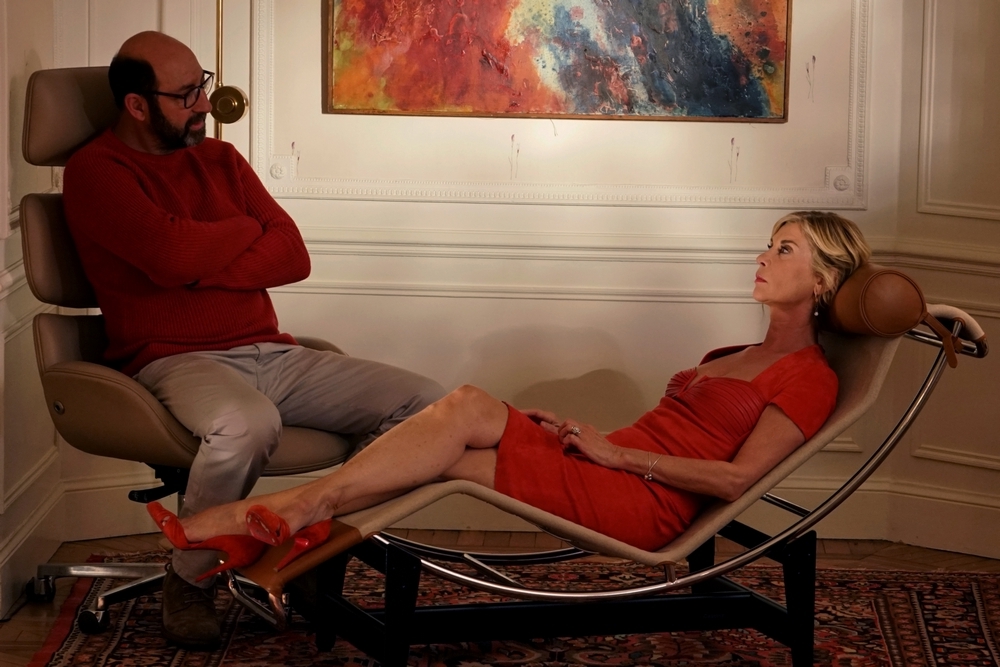The latest season of the teen drama Euphoria has not only been a guide to the world of makeup, manicure and hair trends, it has also touched on important social issues that have been on the agenda for a long time but have yet to be addressed. It was the story of Kat Hernandez (played by Barbie Ferreira), a teenage girl who went from insecurity to self-acceptance but, as it later turned out, continued to hate herself. “The problem with self-loathing is that at some point the whole world becomes obsessed with the cult of self-help,” says a voice-over during one episode of the series. Fictitious influencers appear in Kat’s room and reiterate that they are proud of her self-confidence. To which the protagonist replied: “The confidence I have depicted was not real.” After these words, the models go crazy and keep saying the popular “inspirational” phrases about self-acceptance.
The truth is, the feeling of insecurity is outdated in our world. And confidence, on the contrary, took on the appearance of a magic pill, a universal solution to all problems – from finding a partner to career success. It started in the mid 2010s when the body positive movement gained popularity. Initially, she was part of the activist of the 60s – against capitalism and the diet industry. But over time, everything related to the body and its acceptance came to be called body positivity, and this buzzword came to be used in the context of self-love. Stars, bloggers, and influencers have started talking to your body about the importance of “friendship.” However, few people mentioned that it is not so easy and fast to come to this state. For this reason, many, like Kat from Euphoria, understood self-confidence as an external manifestation through behavior, clothing, makeup, and speech. But internal problems did not go anywhere, they were simply shelved.
Let’s see when self-confidence became the key to success and how did social networks strengthen this position? What role does your relationship with your body play in the process of self-acceptance?
External self-confidence is deceiving

An example of self-confident Hollywood stars can often provoke complexes in us – why does he love himself, despite all the shortcomings, but I do not? But sooner or later we see the real picture. For example, it happened with singer Lizzo, who was criticized by many for an unhealthy body. After years of promoting body positivity, she began participating in a “juice cleanse” weight loss program that upset her fans. Barbie Ferreira, who plays Kat in Euphoria, revealed in an interview that the aforementioned scene is personal to her: “I don’t want everyone to just focus on the fact that I’m confident because I’m not sure of myself.” Both examples prove once again that photos on social networks do not reflect real life. Second, they ask the question – why did we begin to associate appearance with self-confidence?

Andrey Zberovsky, psychologist, doctor of cultural studies, writer
“For decades, only rich people could afford to look good, so we subconsciously have a causal relationship – if a person looks good, he is most likely successful. And then a reverse chain emerged – if I invest in looks, rich people will accept me in their circle and I do the same. “I’ll be.
Alena Zolotareva, candidate of psychological sciences, hypnologist, EMDR therapist and member of the European Psychosomatic Medical Association, says that social networks and public pressure are dangerous for a healthy attitude towards oneself:

Alena Zolotareva
“Foreign researchers have shown that social networks and media reduce a person’s self-acceptance, and this often leads to anxiety and depressive symptoms. These connections are based on the mechanism of comparison. How do we know if we are beautiful or thin enough? That’s right, we need to compare ourselves to others and close or close to our ideals. we need to understand where we are on the scale of distance, beauty or harmony.
Attitude to the body is an important part of self-acceptance

The question may arise – why are we talking about the process of accepting ourselves only in the context of loving our body? The fact is that the attitude to the body is an important part of the attitude to oneself, and without it it is impossible to accept oneself in general. “This is the good old principle of the union of soul and body, on which modern psychosomatic medicine is based,” says Alena Zolotoreva. Powered by Andrey Zberovsky:
“Our thinking is very dependent on associations, and one’s self-acceptance through appearance is related to them. Patterns are imposed on us from childhood. For example, a strong-willed chin is a sign of masculinity, and blond hair is a sign of sexuality. It is they who form a wrong attitude towards themselves only through external manifestations. Therefore, every It is important for man: the first is to understand what patterns he has, and the second is to try not to give in to their pressures.
“Sounds understandable,” thought bloggers and education writers, and after the popularity of body positivity they started offering quick fixes in the form of marathons and trainings. True, such courses as “Love Yourself in 15 Days” with the stated promises did not justify themselves.
Why don’t quick tips work in the process of self-acceptance?

Quick tips aren’t always bad. They can be helpful in solving specific problems – for example, correct breathing technique for panic attacks. But a quick conclusion is not suitable for all questions.
First, such advice makes us believe in the power of a “magic pill” to help anyone and everyone. But the underlying causes of any internal problem are made up of several factors. And each person has his own. “The reasons we don’t accept or love ourselves don’t lie on the surface. Any major change requires our work and effort. Even if they turn to a psychotherapist, some clients expect magic from him and are very disappointed when they find out that they will have to work in therapy. A psychotherapist only cares about herself and others. it is a person’s guide on the path to acceptance, it helps to find not quick, but unique recipes for a particular customer, ”says Alena Zolotareva.
Second, in order to think in a new way, you must first break down old attitudes and thought patterns. There is a proverb that says “Habit is second nature”. It takes several months to automate any action, including behavioral ones. On average, it takes about two to three months for a new habit to form. Therefore, in as little as a few weeks, our brain does not have time to master the necessary skill or thought pattern.”
How do I know if I’m on the right track towards self-acceptance?

Once again – external appearance or behavior does not always reflect reality, and all psychological changes are subjective and cannot be seen. Therefore, a person can only determine the degree of his own psychological comfort. How is it done?
Alena Zolotareva recommends using a visual analog scale, which is a ruler with divisions from 0 to 10. This is often used by a neurologist to determine the degree of pain a patient is experiencing. In recent years, however, it has become increasingly common in psychotherapy to identify client progress. “Rate how much you accept yourself on a scale of 0 to 10, and then rate how much you want to accept yourself on the same scale. There are no rules here, but if your position on the self-acceptance scale is high and close to what you want, you’re most likely on the right track.
Source: People Talk
Elizabeth Cabrera is an author and journalist who writes for The Fashion Vibes. With a talent for staying up-to-date on the latest news and trends, Elizabeth is dedicated to delivering informative and engaging articles that keep readers informed on the latest developments.





